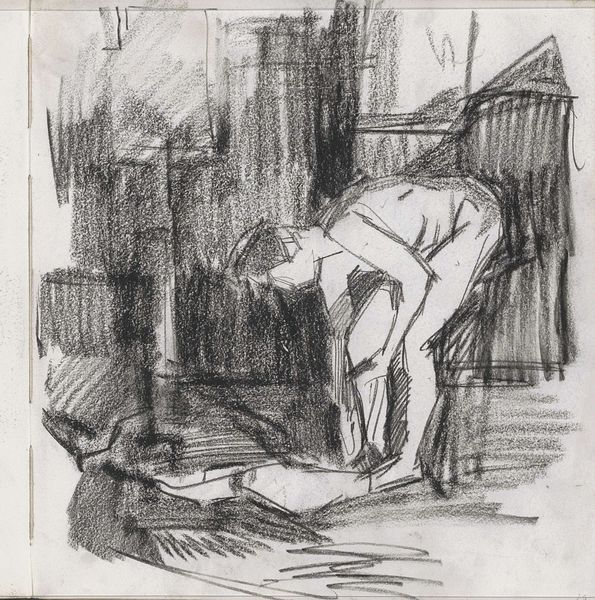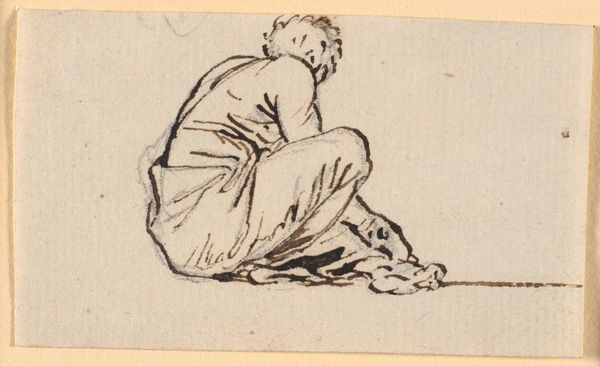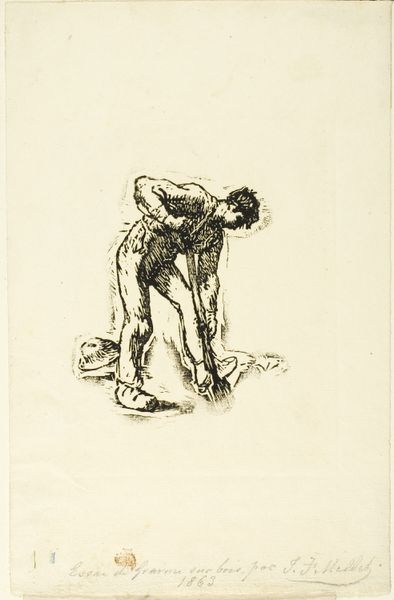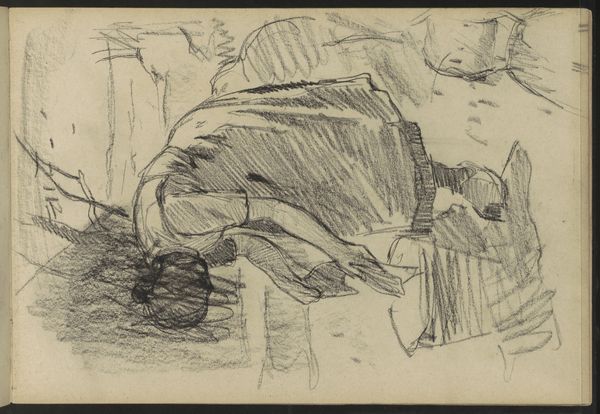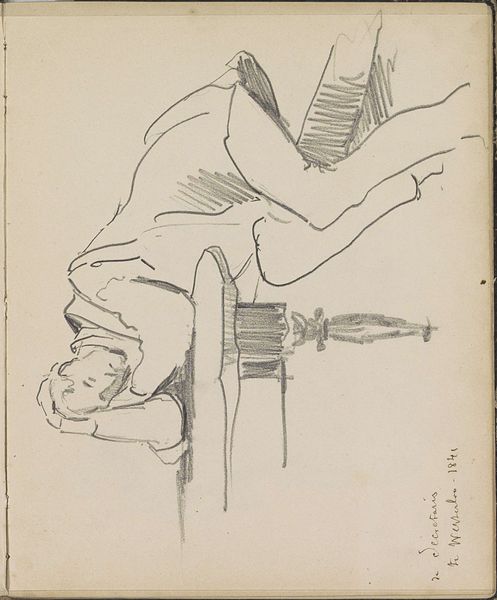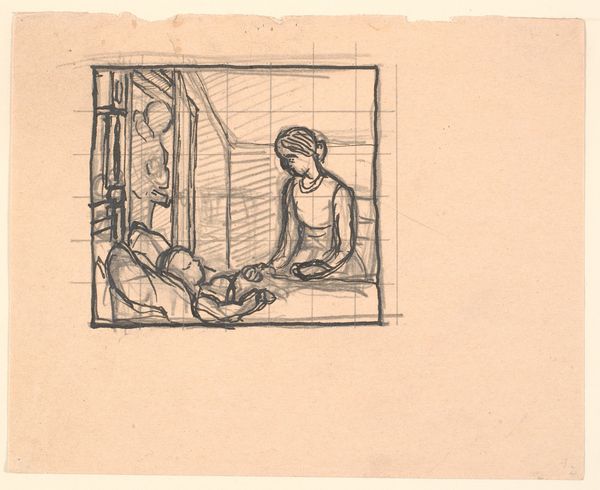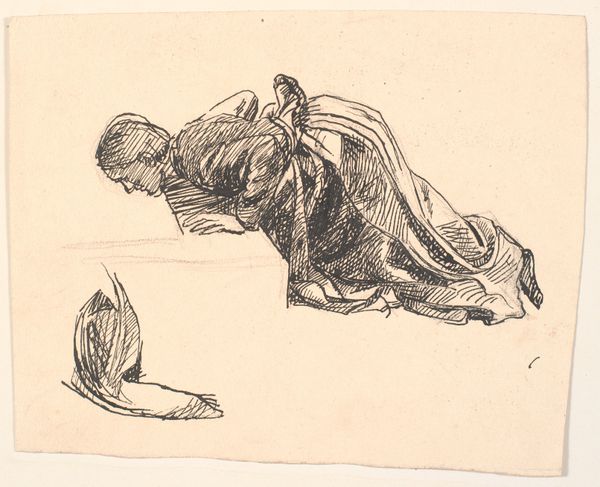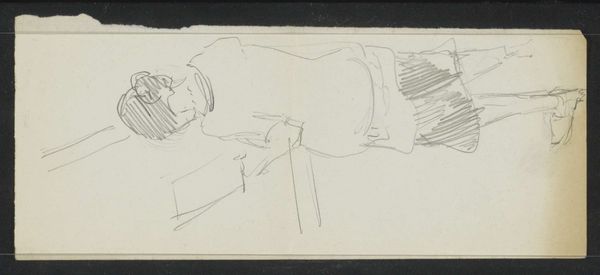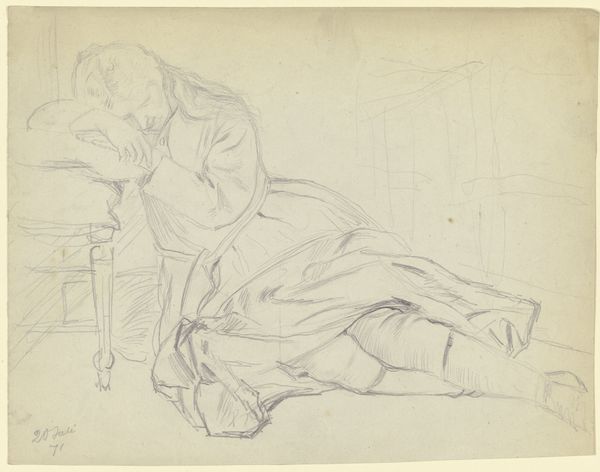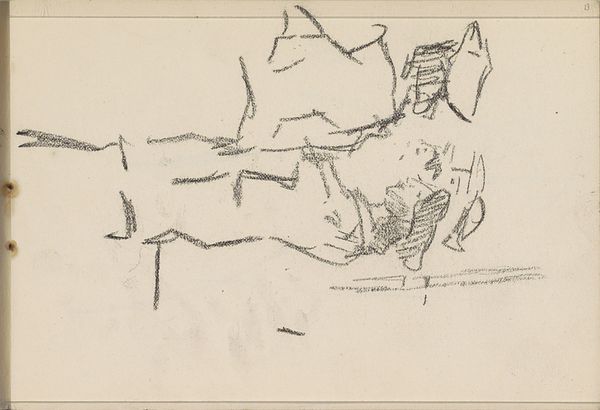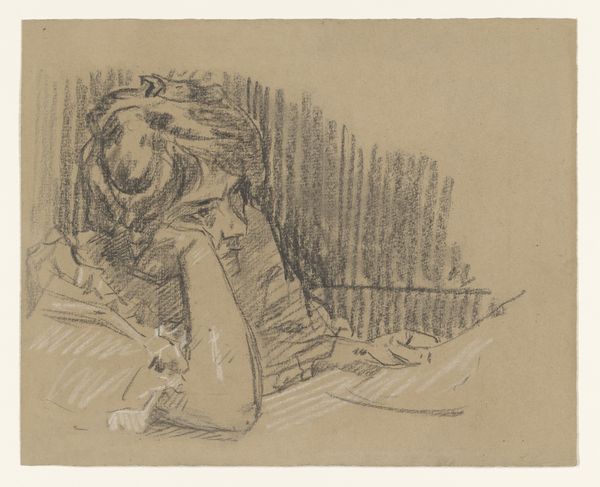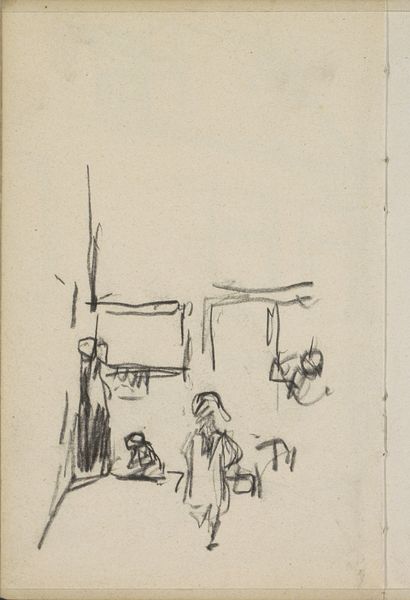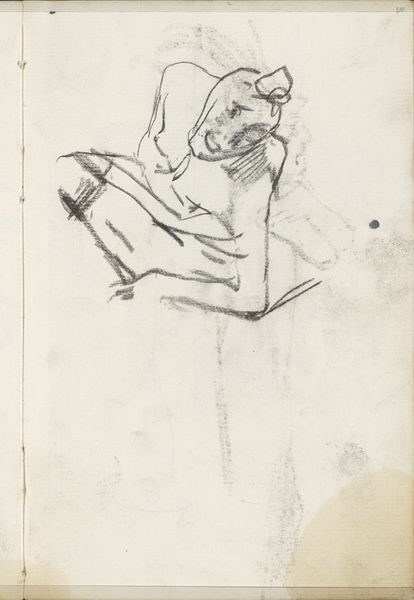
En kvinde, der ligger på knæ, holdende en genstand i den udstrakte højre hånd 1743 - 1809
0:00
0:00
drawing, ink, pen
#
portrait
#
drawing
#
neoclacissism
#
light pencil work
#
ink drawing
#
pen sketch
#
figuration
#
personal sketchbook
#
ink
#
idea generation sketch
#
ink drawing experimentation
#
pen-ink sketch
#
sketchbook drawing
#
pen
#
storyboard and sketchbook work
#
nude
#
sketchbook art
Dimensions: 84 mm (height) x 159 mm (width) (bladmaal)
Curator: What we're looking at is a piece by Nicolai Abildgaard titled "En kvinde, der ligger p\u00e5 kn\u00e6, holdende en genstand i den udstrakte h\u00f8jre h\u00e5nd"—roughly, "A woman kneeling, holding an object in her outstretched right hand." Abildgaard made this sketch using pen and ink sometime between 1743 and 1809. Editor: My first thought? Melancholy. She's reaching, almost pleading, but for what? There's a quiet desperation in the lean of her body, the almost feverish shading around her form. The sketchiness, especially of the unidentifiable architectural fragment next to her, adds to this feeling, it isn't clearly explained. Curator: It's interesting that you use the word "desperation." Abildgaard was a key figure in bringing Neoclassicism to Denmark. His work often explored themes of virtue and heroism, looking back to ancient Greece and Rome for inspiration, so it feels unexpected. The woman's pose is classically inspired. Maybe a suppliant to a forgotten god, reaching towards something...sacred? Editor: Or perhaps something withheld. I see the influence of Neoclassicism in the figure's idealized form and graceful lines. But is that all there is? What is the context of this moment? Is it an interpretation of a narrative that reflects on issues of female agency and restricted freedoms? Considering his time, what did female supplication even represent in his milieu? Curator: Perhaps it's both. Her action exists on the boundary between piety and desire. Abildgaard often used classical imagery to reflect on contemporary issues—political upheavals, social injustices. Remember he was working during the Enlightenment and through the French Revolution! Perhaps the item she’s extending her hand toward contains answers… a bill, maybe? We are bringing our assumptions about the modern day to our reception of art work centuries later! Editor: Exactly! What kind of knowledge, agency, or liberation is the “object” supposed to symbolize? The architecture suggests permanence, privilege; is this the world from which she is barred? Curator: Hmmm, it adds another layer, the piece of architecture and her reaching for it might indicate an unreachable or unavailable state of being, right? Thank you. This sketch keeps whispering different possible stories each time I glance at it! Editor: Precisely. And those are narratives we, as viewers and participants in this world, are implicitly and inextricably constructing.
Comments
No comments
Be the first to comment and join the conversation on the ultimate creative platform.
